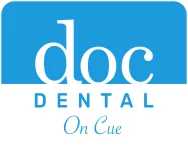Dental Bonding – Kew, Melbourne, VIC
Dental bonding is one of the simplest and most versatile restorative treatments that we offer. If you have a tooth that is slightly chipped, cracked or decayed, we can use a resin to cover or rebuild the damaged areas.
 Bonding also functions as a cosmetic treatment to fill gaps, reshape teeth and fix discolouration. In some cases, it is used instead of amalgam fillings or even to protect tooth roots.
Bonding also functions as a cosmetic treatment to fill gaps, reshape teeth and fix discolouration. In some cases, it is used instead of amalgam fillings or even to protect tooth roots.
The material used in bonding is a putty-like plastic composite resin. Once it has been sculpted onto the teeth, it is then hardened. We can easily customise the color of the bonding resin to match the exact colour of your tooth enamel for a seamless look.
Our skilled team can help determine if dental bonding is the best way to restore your smile. Call us today to schedule a consultation.
What Is Dental Bonding?
Dental bonding is a fairly straightforward process compared to other restorative dental treatments. In most cases, bonding procedures can be completed in a single visit. It doesn’t usually require anaesthesia and takes about as long as your usual clean appointments. The dentist will remove some tooth enamel to roughen the surface where the bonding agent will be placed. After applying a liquid to help the resin stay attached, they will shape the bonding material to be both functional and aesthetically pleasing. Once it is placed and moulded, the material is solidified with an ultraviolet light and then polished. The dentist will check to make sure you can comfortably bite down. If any adjustments are needed, they can smooth down or build up the restoration until you are satisfied.
Limitations of Bonding
Although bonding is an incredibly useful tool for small-scale repair and cosmetic work, it does have limitations.
Composite resin lacks the durability that veneers and crowns have. If you have a majorly damaged tooth or need a longer-lasting solution, bonding may not be your best option. Veneers and crowns are also more resistant to staining.
While bonding can be used for small gaps, it is not a replacement for orthodontic treatment. Crooked teeth and most bite problems can only be resolved by shifting your teeth with braces or other orthodontic appliances.
Bonded teeth do not respond well to whitening, so getting your teeth whitened after a bonding treatment may create a colour mismatch between your original teeth and the bonded tooth. It’s a better idea to get a teeth whitening first so we can use a brighter, whiter resin to match your shiny new smile.
Caring for Bonded Teeth
Bonded teeth need to be taken care of just like any of your other teeth or with even greater care. The resin can chip, crack and get stained if not treated properly. Bonding is weaker than your original enamel and cannot be whitened. For this reason, you will need to avoid staining foods and beverages such as coffee for at least 24–48 hours after your procedure. Nail-biters and ice-chewers beware: Bonding will not hold up against your bad habits. Depending on how good your oral hygiene is, your restoration should last between three and ten years before needing a touchup.
